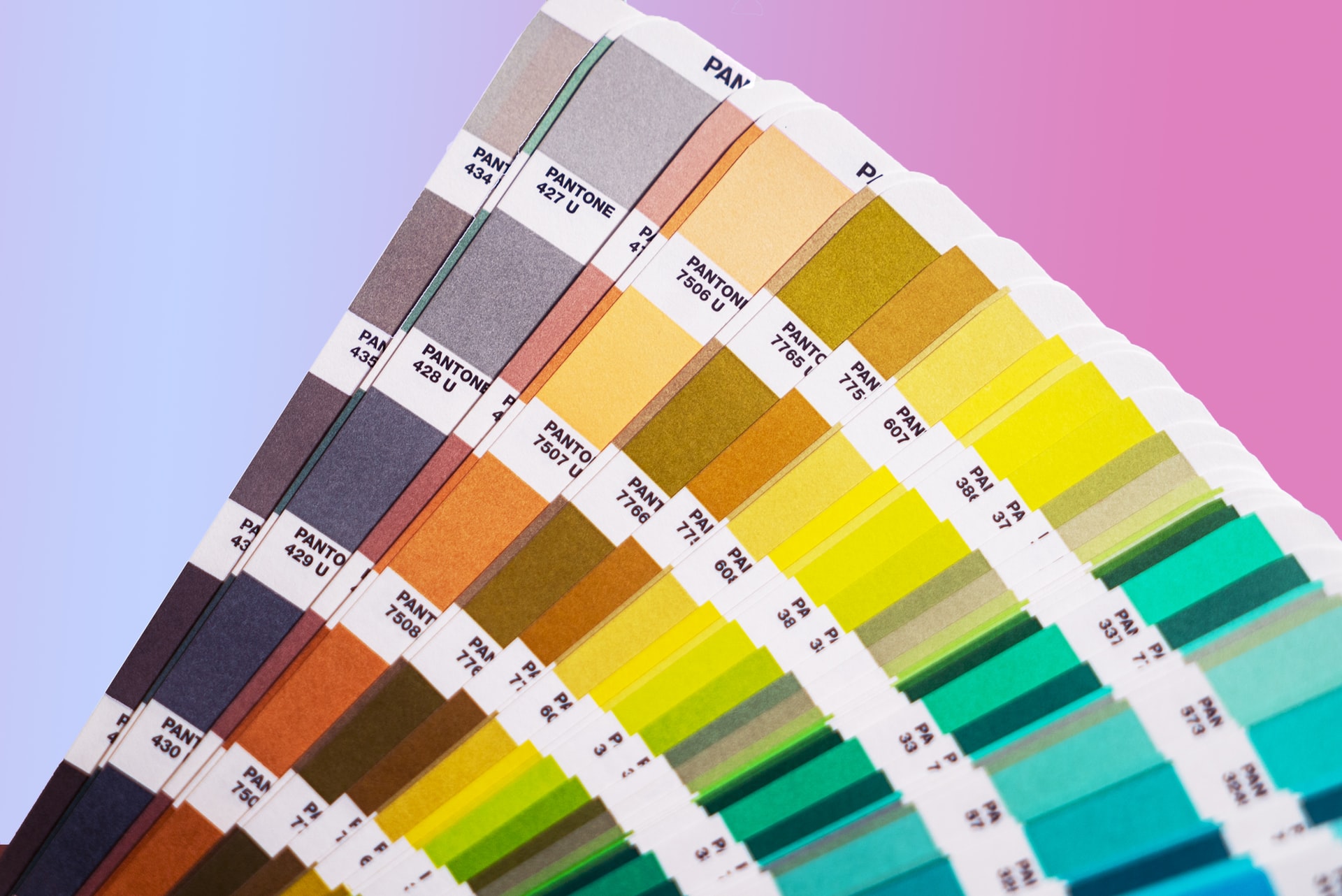
26 Apr Pantone Colors: A Guide for Printed Graphics
Pantone colors are a set of standardized colors commonly used in industries such as printing, graphic design, and fashion. However, those who are new to these industries may not be aware of all the ways that Pantone colors help ensure clear and consistent designs. Pantone colors can play a crucial role in the printing process, so Mousegraphics’s digital print specialists are happy to explain further.
What Are Pantone Colors?
Created by Pantone LLC, Pantone is a standardized language of colors. Each of over 1,000 colors has an assigned numerical designation. This gives brands and manufacturers tight control over their products and designs and provides the highest consistency and quality possible.
The term “Pantone color” can refer to either of two particular systems produced by Pantone LLC. These are the Pantone Matching System (PMS) and the Pantone Fashion, Home + Interiors System (FHI). The PMS and FHI systems use different color objectives for tinting different materials.
What Is the Pantone Matching System (PMS)?
PMS is the proprietary color numbering system created by Pantone for printing, digital design, and packaging. It provides market-relevant colors that will pop out when businesses display their materials. It helps marketing teams design items and displays that will grab and hold the attention of their customers.
PMS includes both solid colors and process colors. Solid colors will accurately represent an intended color from a graphic design by using premixed ink recipes. Printers then apply the inks in single runs that do not mix during printing. Generally, designers use solid colors when they need to print just a few colors, like in brochures, newsletters, or stationery.
Process colors use limited selections of inks for CMYK printing. Printers apply the inks in varying ratios of dots for each color. Because this process is slightly less accurate than solid color printing, designers generally use process colors in cases where precision is not critical to the design. Photographs and paintings, which can include many colors, are good examples of pieces served well by process colors.
What Is the Pantone Fashion, Home + Interiors System (FHI)?
FHI is a color system that services industries working with textiles, coatings, and pigments. If you have ever selected a paint color for your home’s walls, you have almost certainly worked with this system.
The FHI color system provides more blacks, whites, and neutral shades for designers to use. Additionally, the colors are designed to work on the materials commonly used by designers, such as leather and soft fabrics. This helps to ensure that every wall, jacket, and accessory receives a replicable color and shade for a consistent, satisfying design.
What System of Pantone Colors Should We Use?
Generally, when creating printed marketing materials, your best choice is PMS. Pantone designed PMS to provide consistent, high-quality results. Depending on the complexity of your printed designs, you can speak with your print service provider to decide if solid or process colors will best suit your needs.
On the other hand, if you are creating logo clothing or other merchandise for your brand, then FHI is your best option. Once again, Pantone designed this system to provide consistent results for these fields, bearing in mind the unique requirements of different materials.
Where Should We Print Using Pantone Colors?
If you’re looking to use Pantone colors in your next print design, Mousegraphics has been the industry leader in Arizona for over 30 years. We’re thrilled to offer the expertise and knowledge you need for exceptional printed results. Contact us today at (480) 470-7438 to discuss how we can make your print ideas come to life.
Photo by Mika Baumeister on Unsplash.



